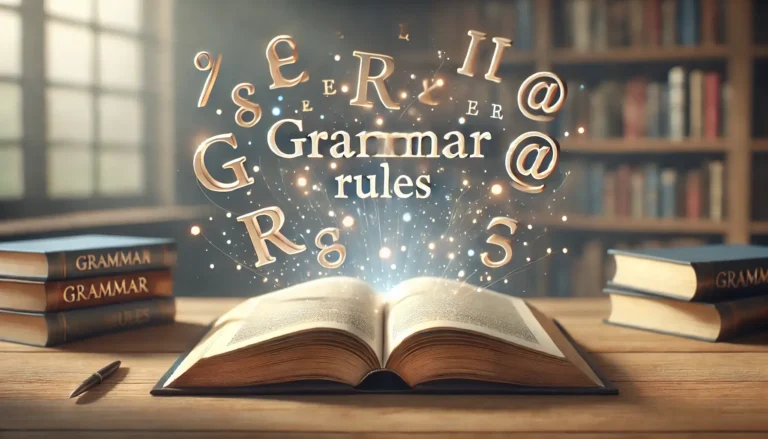The present tense is fundamental in English grammar, encompassing actions and states that occur now or repeatedly.
It enables speakers to describe events happening at the moment, habitual behaviours, and actions that started in the past but remain relevant.
In this article, I delve into the four forms of the present tense: simple present, present continuous, present perfect, and present perfect continuous—with explanations and illustrative examples to clarify each form’s purpose and usage.
1. Simple Present Tense
The simple present tense is used to describe habitual actions, general truths, feelings, thoughts, and sometimes scheduled future events. In its simplest form, it serves as the “base” or unaltered form of the verb for most subjects, although it takes on an additional -s or -es ending in the third person singular (he, she, it).
Examples:
- “Anna drinks coffee every morning.”
- “The sun rises in the east.”
- “Dogs bark when they sense strangers.”
Usage and Illustrations: The simple present is ideal for expressing routines or facts. Consider the sentence, “Tom rides his bicycle to school every day.” Here, rides conveys a habitual action that happens regularly, establishing a sense of routine.
This form is also useful for general truths, such as “Water boils at 100 degrees Celsius,” indicating a fact that remains true at all times.
When discussing future events, especially scheduled ones, the simple present is also appropriate. For example, “The train departs at 6 PM,” signals a future event based on a fixed schedule.
2. Present Continuous Tense
The present continuous tense (also known as present progressive) describes actions currently in progress or ongoing actions at the moment of speaking. It is formed using the present tense of to be (am, is, are) followed by the -ing form of the main verb.
Examples:
- “She is reading a novel.”
- “We are waiting for the bus.”
- “The birds are chirping outside.”
Usage and Illustrations: The present continuous provides a snapshot of an action in progress. Imagine a situation at a coffee shop: “John is enjoying a cup of tea.” This sentence gives a vivid sense of John’s current activity, capturing him in the act.
It’s also useful for describing temporary situations. For example, “They are staying with relatives for the week” suggests a limited-duration action, showing that this situation is not permanent.
Additionally, the present continuous can indicate future plans, such as, “I am meeting my friend tomorrow,” indicating an arranged event.
3. Present Perfect Tense
The present perfect tense connects past actions to the present moment. It is used for actions that occurred at an unspecified time in the past, have been repeated, or continue to impact the present.
The present perfect is formed with have or has followed by the past participle of the main verb.
Examples:
- “They have traveled to five different countries this year.”
- “I have completed my assignment.”
- “He has already eaten dinner.”
Usage and Illustrations: The present perfect effectively bridges past actions with their current relevance. For example, “I have seen that movie several times” suggests past experiences without specifying exact times, indicating a familiarity with the film.
The present perfect can also highlight a connection between a past action and a current situation, as in “She has broken her leg, so she can’t participate in the race.”
This example implies that the past injury still impacts the present. For habitual actions, the present perfect might appear as “He has always loved painting,” which links a past habit to a current interest.
4. Present Perfect Continuous Tense
The present perfect continuous tense emphasizes an action that started in the past and is still continuing, often with a focus on duration. It is formed by combining have or has, been, and the -ing form of the main verb.
Examples:
- “I have been reading this book for hours.”
- “They have been working on the project since morning.”
- “She has been learning French for two years.”
Usage and Illustrations: The present perfect continuous provides a clear sense of duration and continuity. For example, “She has been practicing piano since noon” emphasizes that the action (practicing) started earlier in the day and is still ongoing.
This tense is especially useful for highlighting long-term commitments. For example, “They have been living in the same town for decades” suggests a lasting connection to the place, underscoring a commitment that spans a significant amount of time.
Distinguishing the Four Present Tenses: Examples in Context
To better understand the nuances of each tense, let’s look at examples that illustrate their unique functions within a single context.
Imagine a person describing their experiences as a painter:
- Simple Present: “I paint landscapes.” (This implies a general habit or profession.)
- Present Continuous: “I am painting a sunset scene right now.” (This indicates an ongoing action happening at this moment.)
- Present Perfect: “I have painted several landscapes this month.” (This connects past actions—painting landscapes—to the present moment without specifying when each painting was created.)
- Present Perfect Continuous: “I have been painting since morning.” (This highlights the duration and continuity of the action from the morning up to now.)
Special Considerations for Third Person Singular
In the simple present tense, the third person singular form (he, she, it) requires additional changes, often involving the addition of -s or -es to the verb. Irregular verbs also exhibit unique changes.
Examples:
- Regular verbs: “He walks to work.”
- Verbs ending in -y: “She tries new recipes.”
- Verbs ending in -ch, -sh, -ss, -x, or -o: “He watches TV in the evenings.”
For verbs like to be and to have, irregular forms are required:
- to be: “She is happy with her new job.”
- to have: “He has a collection of vintage coins.”
Practical Application: A Story Illustrating All Four Present Tenses
Consider a scenario of a student preparing for an important exam to showcase each present tense:
- Simple Present: “Sam studies engineering.” (This indicates Sam’s general area of study.)
- Present Continuous: “He is studying for his final exams.” (This suggests that Sam is actively engaged in the activity at the moment.)
- Present Perfect: “He has completed his coursework.” (This shows that his coursework is finished, a past action relevant to the present.)
- Present Perfect Continuous: “He has been studying for this exam since last month.” (This emphasizes the duration and continuous nature of his study preparation.)
Conclusion
Mastering the present tenses is essential for effective communication in English, allowing speakers and writers to express current actions, general habits, and the continuity or impact of past actions.
The simple present captures timeless truths and regular routines, the present continuous immerses us in ongoing actions, the present perfect connects past actions to the present, and the present perfect continuous highlights actions that began in the past and continue into the present.
Together, these four tenses provide the foundation for expressing a wide range of current activities, experiences, and ongoing situations with clarity and precision.
Practicing each form and becoming comfortable with their distinctions will enrich your language skills and enhance your ability to communicate effectively in both speech and writing.








